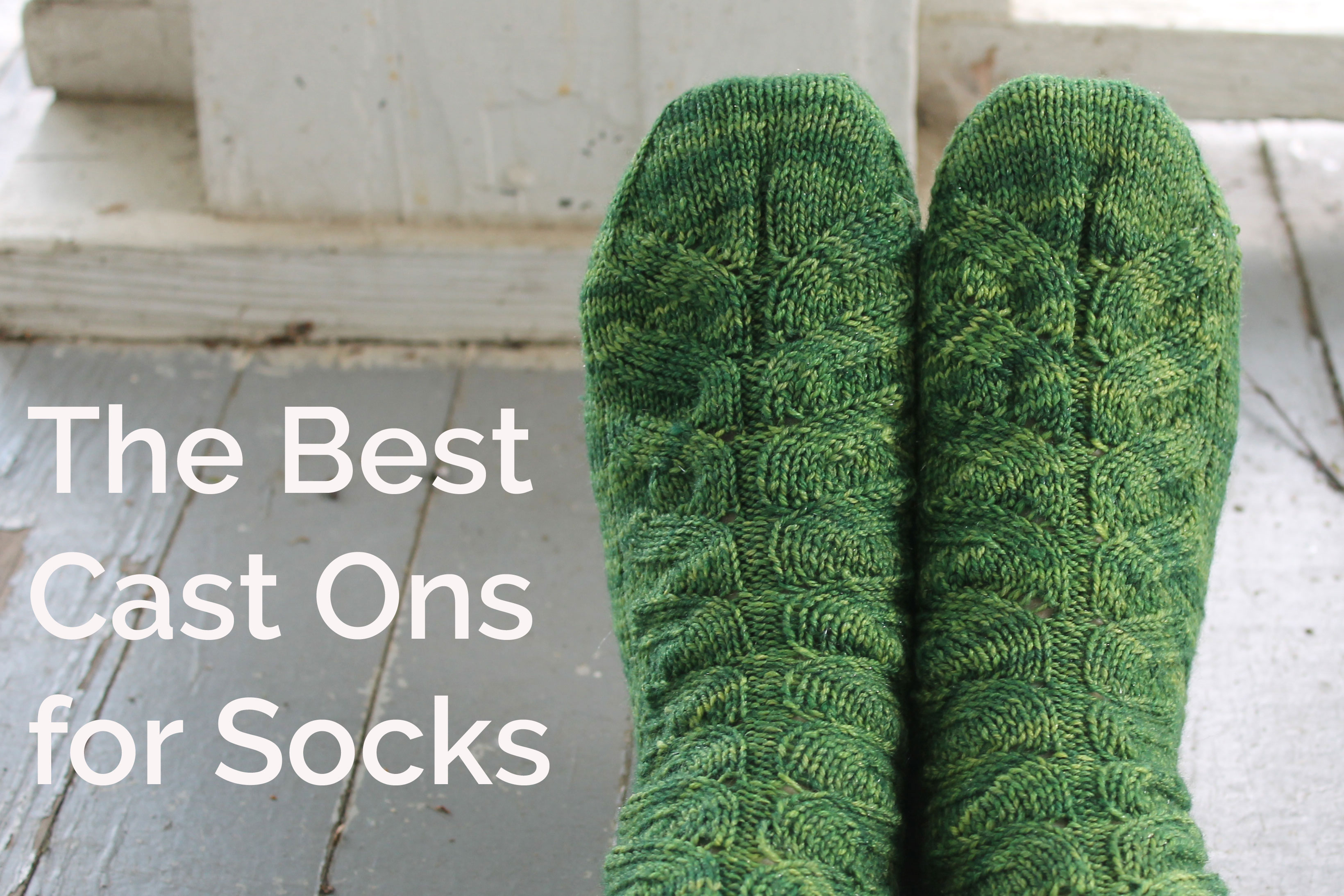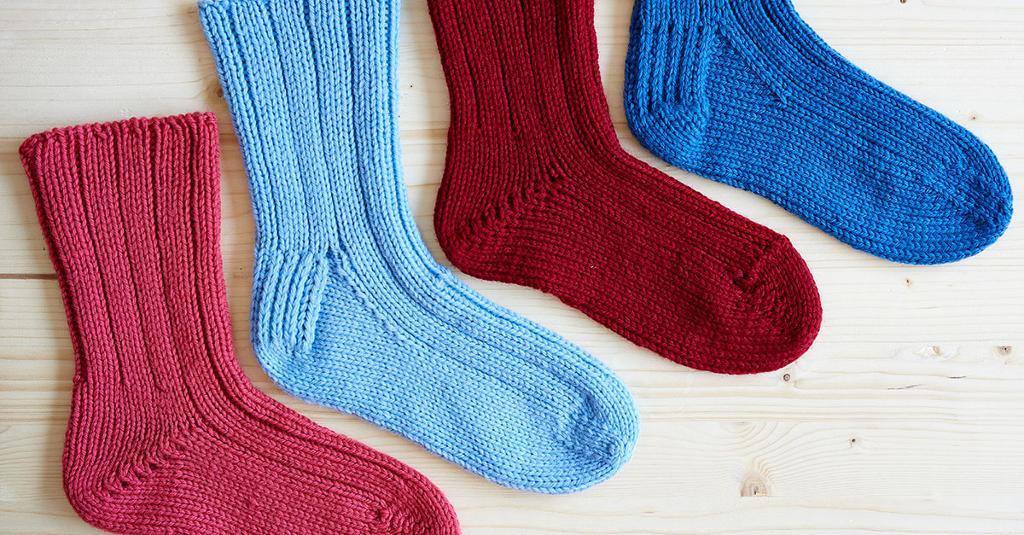
Whether you’re knitting toe-up or cuff-down, choose the best cast-on for your socks.
If you ask five knitters what the best cast-on for socks is, you’ll probably get five different answers.
It’s impossible to find one cast-on to be dubbed the best, especially if you’re knitting a variety of sock patterns. What’s best for one sock pattern is not likely best for all sock patterns.
But there are a few tried and true cast-ons that sock knitters turn to again and again. Next time you’re knitting socks, whether they’re toe-up or cuff-down, try one of these cast-ons. One of them might just become your reply when asked about the best cast-on for socks!
Toe-up cast-ons
Toe-up socks, as you probably know, begin with the toe and end with the cuff. Casting on for the toe is one thing that sometimes stops knitters from trying this technique, but like any knitting technique, it just takes some practice to get it right.
Judy’s magic cast-on
Best for: Knitters who hate grafting or finishing
This cast-on was invented by knitter Judy Becker. Judy had tried all the usual toe-up cast-ons — provisional and figure-eight, for example — but wanted a cast-on that was invisible on both sides without needing any tidying up.
Today, you’ll find that many knitters recommend Judy’s magic cast-on for toe-up socks. You can find the instructions for Judy’s magic cast-on here.
Advantages
- Invisible on the right side and the wrong side
- Doesn’t need to be neatened or finished; just cast on and keep knitting!
- You can cast on with either circular needles or double-pointed needles
- Once you learn the cast-on, you can use it for other closed-tube projects like bags
Turkish cast on
Best for: Knitters who have been frustrated with other toe-up cast-ons in the past
The result of this cast-on is very similar to Judy’s magic cast-on. However, the method for casting on is just a little different, as it involves wrapping the yarn around both needles, then knitting the stitches off to create two rows of stitches. Get instructions for the Turkish cast-on here.
Advantages
- If you can wrap the yarn around the needle and knit, you can learn this cast-on.
- Many knitters find it much easier than other toe-up cast-ons.
- This cast-on works with knitting in the round using double-pointed needles or magic loop.

Photo via Ann Budd
Cuff-down cast-ons
Cuff-down is the most popular way to knit socks. The cast-ons for this method are endless since you can cast on just like you would for any other project. However, there are a few stars among the cast-ons that knitters use again and again.
Long-tail cast-on
Best for: Knitters who want a cast-on that’s simple yet stretchy
You’ve probably used the long-tail cast-on many times on non-sock knitting projects. This cast-on is one of the most common and uses what some call the slingshot method. Never used long-tail before? Get a long-tail cast-on tutorial here.
Advantages
- Produces a stretchy edge that stretches to fit over your leg
- Basic cast-on that many knitters already know
German twisted cast on
Best for: Knitters familiar with long-tail who want to add even more stretch
You may also know this cast on as Old Norwegian cast-on. The cast on is very similar to the long-tail cast-on, except it’s even stretchier because of the extra twist in each loop.
Advantages
- If you already know long-tail, German twisted is easy to learn
- The extra little twist makes the edge a little fancier than long-tail cast-on
- The extra twist also makes this edge more durable
Get a closer look at these cast-ons, plus other alternatives, in Ann Budd’s new Essential Skills for Sock Knitting class. You’ll also learn different methods for shaping heels, binding off and more.

Share tips, start a discussion or ask one of our experts or other students a question.
Already a member? Sign in
No Responses to “4 Tried-and-True Cast-Ons for Socks”